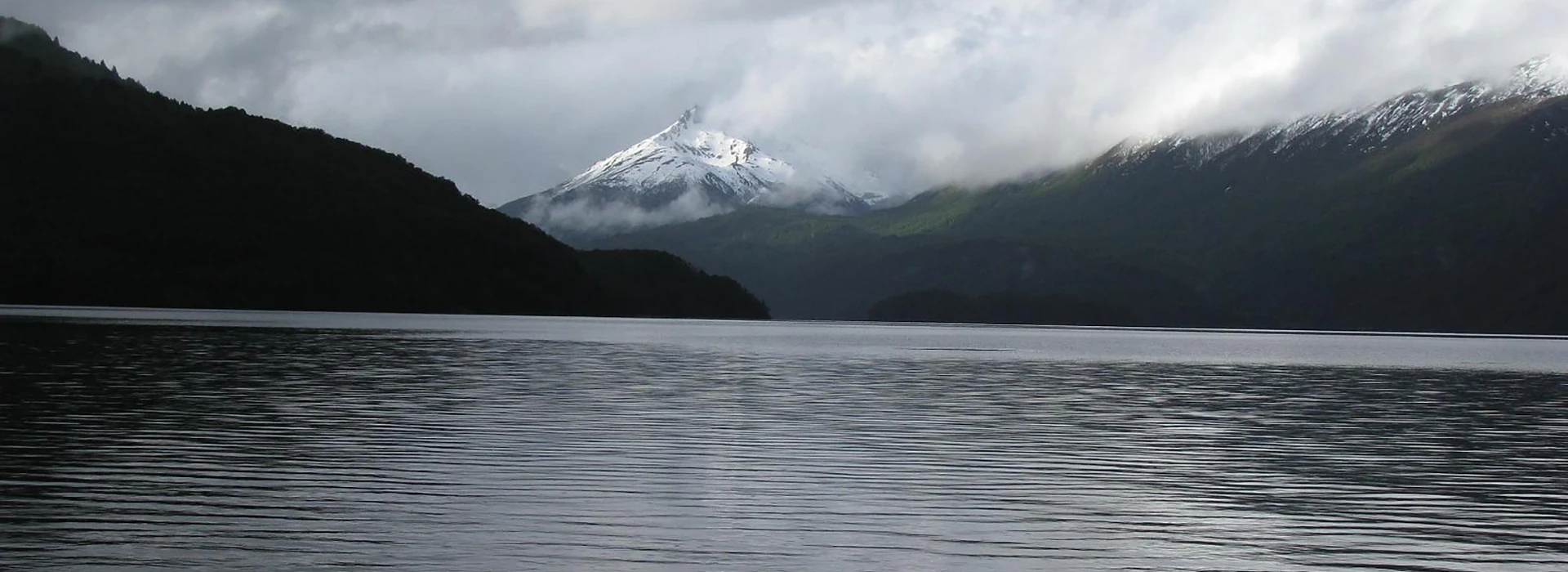
Nahuel Huapi National Park
The First National Park in Argentina
Nahuel Huapi National Park is a natural gem of Patagonia and the oldest national park in Argentina. Established in 1934, its creation marked the beginning of the country’s system of protected areas. This vast park spans more than 700,000 hectares of spectacular landscapes, including lakes, mountains, forests, and crystal-clear rivers, and it protects a biodiversity that is unique in the world.
Lake Nahuel Huapi, a Patagonian Landmark
Lake Nahuel Huapi, which gives the park its name, is one of the region’s most iconic natural wonders. Covering more than 500 square kilometers and surrounded by the majestic Andes mountain range, this glacial lake dazzles with its deep blue color and cold, pure waters.
What makes Lake Nahuel Huapi so special is the diversity of landscapes around it: volcanic sand beaches, snow-capped peaks, lush forests of coihues and lengas, and rich wildlife that includes aquatic birds, deer, and even the elusive huemul.
>Exploring the lake is an unforgettable experience. Visitors can take boat excursions to destinations such as Victoria Island or the Arrayanes Forest, go kayaking, enjoy sport fishing, or simply admire the scenery from the many natural viewpoints.
Lake Nahuel Huapi is also the subject of numerous local legends, such as that of the mythical “Nahuelito,” a mysterious creature said to inhabit its depths. Beyond the myths, the lake is a symbol of Patagonian natural beauty and a space for recreation and connection with the environment.
Preserving Nahuel Huapi National Park is essential to ensure that its unique landscapes and biodiversity continue to inspire awe in future generations. Visiting it is a profound experience of wonder and respect for nature in its purest form.
Mount Tronador, one of the highest peaks, displays glaciers and majestic walls
Mount Tronador, located in Nahuel Huapi National Park on the border between Argentina and Chile, is a natural spectacle that impresses all who visit it. Named for the thunderous sound of ice breaking off from its summit, Tronador is one of the park’s main attractions and a striking landmark in the Patagonian landscape.
With an elevation of 3,478 meters above sea level and seven glaciers at its summit, this extinct stratovolcano offers one of the most breathtaking views in southern Argentina. The glacier tongues, deep snowfields, and towering ice walls rising from its slopes create a majestic and awe-inspiring setting.
Exploring Mount Tronador is an unforgettable experience. Visitors can reach the Black Glacier, one of its most famous glaciers, either on foot or by vehicle. Its dark hue comes from volcanic sediments. From there, one can observe the ancient ice flowing between forested mountains, creating a stunning visual contrast.
In addition to its beauty, Mount Tronador holds significant scientific value. The glaciers that cover it are sensitive indicators of climate change, and their study helps to understand the evolution of Andean ecosystems in the face of global warming.
Like other glaciers in the region, those on Tronador have also experienced significant retreat in recent decades. This transformation reminds us of the urgency to protect these unique and fragile landscapes from environmental threats.
Visiting Mount Tronador is an experience that moves visitors with its scale and majestic silence. It is an invitation to reflect on the grandeur of nature and the responsibility we have to protect it for future generations.
Mount Catedral, with its imposing silhouette, offers thrilling opportunities for climbing and trekking
Mount Catedral, located in Nahuel Huapi National Park in the province of Río Negro, Argentina, is a natural gem that fascinates those who visit it. With a height of over 2,000 meters above sea level and rugged terrain, it is one of the most important mountain activity centers in South America.
What makes Mount Catedral so impressive is its jagged silhouette, formed by rocky spires that resemble the peaks of a Gothic cathedral. This unique landscape, combined with panoramic views of Lake Nahuel Huapi and the surrounding valleys, creates a breathtakingly beautiful setting.
Exploring Mount Catedral is a sensory experience. Visitors can embark on trekking routes of varying difficulty levels or challenge their skills in the climbing areas that attract athletes from around the world. In winter, the mountain transforms into a renowned ski resort, while in summer it becomes a paradise for hikers and climbers.
In addition to its touristic appeal, Mount Catedral is part of a mountain ecosystem of great environmental value. Its surroundings are home to plant and animal species characteristic of the Andean-Patagonian forests, making it a point of interest for scientific research and conservation as well.
Rising temperatures and tourism pressure on certain areas of the mountain have raised concerns about its preservation. This reminds us of the need to develop sustainable and responsible tourism that respects nature’s rhythms and balance.
Visiting Mount Catedral is an experience that leaves a lasting impression. It is a symbol of adventure in Patagonia, but also a call to protect the natural treasures that form our shared heritage.
The beauty of Nahuel Huapi National Park is not limited to its famous lake. Visitors can also enjoy the majestic Andes mountains, powerful rivers, waterfalls, and vast forests of lenga and coihue trees that create a unique natural setting. This park offers a wide range of outdoor activities, such as hiking, boating, climbing, mountain biking, and birdwatching, among others.
It also features interpretation centers and public use areas where visitors can obtain detailed information about the region’s flora, fauna, and geography, as well as participate in educational and recreational programs. As you explore Nahuel Huapi National Park, you will have the opportunity to appreciate its scenic richness, experience its biological diversity, and understand why it was the first national park established in Argentina and remains a symbol of environmental conservation in Patagonia.